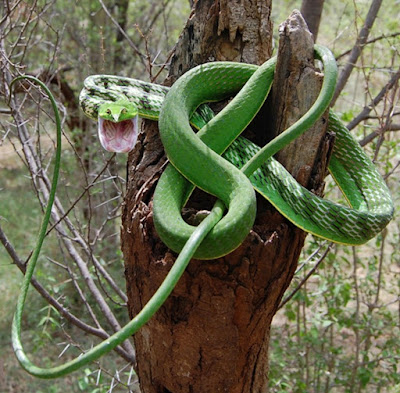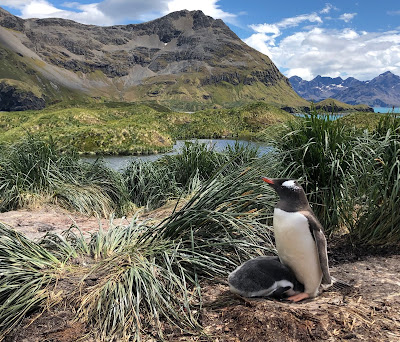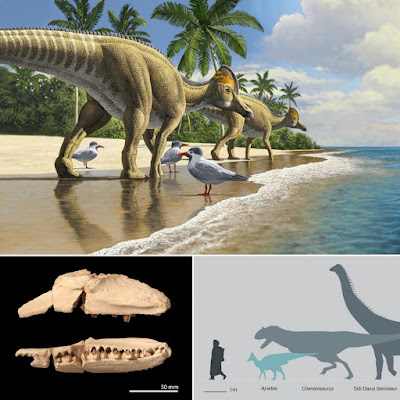[Most Recent Entries] [Calendar View]
Friday, November 6th, 2020
| Time | Event | ||
| 8:39a | [Herpetology • 2020] Disentangling Vines: A Study of Morphological Crypsis and Genetic Divergence in Vine Snakes (Squamata: Colubridae: Ahaetulla) with the Description of Five New Species from Peninsular India
Abstract We carried out a taxonomic revision of Ahaetulla species inhabiting Peninsular India, using a multiple criteria approach (including genetics, morphology, and geography). Our work included populations of the A. nasuta complex (widespread across the entire region, including the Western Ghats), the A. pulverulenta complex (in the Western Ghats, within Peninsular India) and the A. dispar complex (endemic to the Southern Western Ghats) which all revealed undocumented cryptic diversity. Here, we describe five new species and effect nomenclatural changes to some recognised taxa. In the A. nasuta complex, we describe four species from several latitudinal blocks of the Western Ghats and make nomenclatural emendations to the plains populations in the Indian peninsula. We effect nomenclatural change in the A. pulverulenta population of the Western Ghats and describe a new species from the A. dispar group. Our study highlights the use of a multi-criteria approach in unraveling cryptic diversity. This study also reveals a striking case of discordance between morphological and genetic divergence, and the way this is reflected in previous taxonomic and nomenclatural treatments of these populations. Keywords: Reptilia, cryptic species, morphology, Sri Lanka, taxonomy, vine snakes, Western Ghats Ahaetulla oxyrhyncha (Bell, 1825) comb. n. Ashok Kumar Mallik, Achyuthan N. Srikanthan, Saunak P. Pal, Princia Margaret D'Souza., Kartik Shanker and Sumaithangi Rajagopalan Ganesh. 2020. Disentangling Vines: A Study of Morphological Crypsis and Genetic Divergence in Vine Snakes (Squamata: Colubridae: Ahaetulla) with the Description of Five New Species from Peninsular India. Zootaxa. 4874(1); 1-62. DOI: 10.11646/zootaxa.4874.1.1 | ||
| 9:08a | [Ornithology • 2020] Morphometric and Genetic Evidence for Four Species of Gentoo Penguin; Pygoscelis papua, P. ellsworthi, P. taeniata & P. poncetii
Abstract Gentoo penguins (Pygoscelis papua) are found across the Southern Ocean with a circumpolar distribution and notable genetic and morphological variation across their geographic range. Whether this geographic variation represents species‐level diversity has yet to be investigated in an integrative taxonomic framework. Here, we show that four distinct populations of gentoo penguins (Iles Kerguelen, Falkland Islands, South Georgia, and South Shetlands/Western Antarctic Peninsula) are genetically and morphologically distinct from one another. We present here a revised taxonomic treatment including formal nomenclatural changes. We suggest the designation of four species of gentoo penguin: Pygoscelis papua in the Falkland Islands, P. ellsworthi in the South Shetland Islands/Western Antarctic Peninsula, P. taeniata in Iles Kerguelen, and a new gentoo species P. poncetii, described herein, in South Georgia. These findings of cryptic diversity add to many other such findings across the avian tree of life in recent years. Our results further highlight the importance of reassessing species boundaries as methodological advances are made, particularly for taxa of conservation concern. We recommend reassessment by the IUCN of each species, particularly P. taeniata and P. poncetii, which both show evidence of decline. Keywords: Antarctica, integrative taxonomy, new species, Pygoscelis, Southern Ocean Pygoscelis poncetii sp. nov. Common Name. South Georgia gentoo penguin. Etymology. Pygoscelis poncetii is named after Sally Poncet, whose body of work has significantly influenced the field of polar biology, particularly in relation to South Georgia. Diagnosis. Morphologically, P. poncetii can be differentiated from all other species of gentoo by its manus length (mean length = 130.49 mm), being significantly smaller than P. papua (mean length = 135.08 mm, p = .0292) and significantly larger than both P. ellsworthi and P. taeniata (mean lengths = 115.38 mm and 125.27 mm, p < .0001 and p = .0232, respectively). Radius length differentiates P. poncetii (mean length = 52.68 mm) from the larger P. papua (mean length = 58.11 mm, p = .0003) and smaller P. ellsworthi (mean length = 48.90 mm, p = .0039). Genetic comparative techniques (Pairwise FST, heterozygosity, clustering methods) found significant differences among all four species of gentoo penguin with the maximum likelihood phylogeny resolving each species as 100% supported. There are no discernible differences in plumage patterns among the four species. CONCLUDING REMARKS: In this paper, we highlight hidden biodiversity within the species P. papua using genetic and morphometric methods, in keeping with recent assessments of hidden species diversity in birds. Our results clearly support the division of gentoo penguins into at least four species. We name a new species of gentoo, P. poncetii, and recommend elevation of three subspecies to species level (P. taeniata, P. papua, and P. ellsworthi). Our results show the importance of reassessing species boundaries as methodological advances are made. These findings have implications for the threat status of these species, and we urge that this diversity is considered in conservation planning for the Southern Ocean. Joshua Tyler, Matthew T. Bonfitto, Gemma V. Clucas, Sushma Reddy and Jane L. Younger. 2020. Morphometric and Genetic Evidence for Four Species of Gentoo Penguin. Ecology and Evolution. DOI: 10.1002/ece3.6973 | ||
| 10:16a | [Paleontology • 2020] Ajnabia odysseus • The First Duckbill Dinosaur (Hadrosauridae: Lambeosaurinae) from Africa and the Role of Oceanic Dispersal in Dinosaur Biogeography
Abstract The Late Cretaceous saw distinctly endemic dinosaur faunas evolve in the northern and southern hemispheres. The Laurasian continents of North America and Asia were dominated by hadrosaurid and ceratopsian ornithischians, with tyrannosaurs as apex predators. In Gondwanan communities, including Africa, South America, India and Madagascar, titanosaurian sauropods dominated as herbivores and abelisaurids as predators. These patterns are thought to be driven by the breakup of Pangaea and formation of seaways limiting dispersal. Here, we report a new lambeosaurine hadrosaurid, Ajnabia odysseus gen. et sp. nov., from the upper Maastrichtian of Morocco, North Africa, the first Gondwanan representative of a clade formerly thought to be restricted to Laurasia. The new animal shows features unique to Hadrosauridae and specifically Lambeosaurinae. Phylogenetic analysis recovers it within Arenysaurini, a clade of lambeosaurines previously known only in Europe. Biogeographic modelling shows that lambeosaurines dispersed from Asia to Europe, then to Africa. Given the existence of large, persistent seaways isolating Africa and Europe from other continents, and the absence of the extensive, bidirectional interchange characterizing land bridges, these patterns suggest dispersals across marine barriers, similar to those seen in Cenozoic mammals, reptiles, and amphibians. Dispersal across marine barriers also occurs in other hadrosaurid lineages and titanosaurian sauropods, suggesting oceanic dispersal played a key role in structuring Mesozoic terrestrial dinosaur faunas. Keywords: Dinosauria, Ornithischia, Hadrosauridae, Lambeosaurinae, Gondwana, Biogeography Systematic Palaeontology Dinosauria Owen, 1842 Ornithischia Seeley, 1887 Iguanodontia, Baur, 1891 Hadrosauridae Cope, 1869 Lambeosaurinae Parks 1923 152 Arenysaurini n. tax.: Arenysaurini includes all hadrosaurids closer to Arenysaurus ardeveoli than to Tsintaosaurus spinorhinus, Parasaurolophus walkeri, or Lambeosaurus lambei. Ajnabia odysseus new genus and species Etymology. Ajnabia, from Arabic ajnabi, foreigner + odysseus, after Odysseus, the mythical voyager. Holotype. MHNM.KHG.222, partial left maxilla with teeth (Fig. 3-7), fragments of right maxilla, partial left dentary (Fig. 9). Nicholas R. Longrich, Xabier Pereda Suberbiola, R. Alexander Pyron and Nour-Eddine Jalil. 2020. The First Duckbill Dinosaur (Hadrosauridae: Lambeosaurinae) from Africa and the Role of Oceanic Dispersal in Dinosaur Biogeography. Cretaceous Research. In Press. DOI: 10.1016/j.cretres.2020.104678 Ajnabia odysseus - the first duckbill dinosaur from Africa Oceanic dinosaur dispersal, and the role of low-probability, high impact events in evolution |
| << Previous Day |
2020/11/06 [Calendar] |
Next Day >> |













